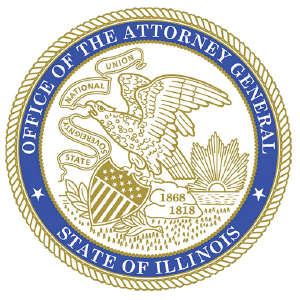Daniel Peter Buck
Sending a love letter is an age-old method of showing affection. But when the author is a Catholic priest and the recipient is a teenage girl, the tradition takes a sickening turn. Father Daniel Buck, a priest of the Archdiocese of Chicago, was assigned to Saint Francis Borgia in Chicago’s Dunning neighborhood beginning in the late 1970s. It was there that he developed an inappropriate relationship with a 15 year old girl in the early 1980s.
One day in June 1984, Buck put pen to paper and authored a graphic and disturbing “love” letter to the young girl. He opened by reflecting on the “wonderful day” they had spent together:
I loved being close to you, holding your hand, feeling your gentle, loving touch, hearing your happy laughter, seeing your smile. I loved your outfit, the way it covered (and uncovered) various delightful parts of you. I tried to be careful, but I couldn’t resist touching your legs and your neck; and I loved holding you close on the subway (rush hour isn’t all bad). Your cute little belly button was like a magnet to me. I hope you didn’t mind me taking a peek at it every chance I got, and searching for it with my naughty fingers in the subway. I’m sorry if I embarrassed you at all, but I’m only human and I can’t resist you.
Buck also described the initial “panic” he’d felt upon receiving a phone call earlier that evening from the teenager’s mother. He said he “feared the worst”—that perhaps the mother had “checked [the girl] for fingerprints” or found “a particularly juicy letter” Buck had written her. But Buck came away from the call “happy” because he felt sure he was “winning back [the mother’s] trust.” Buck told the young girl he “desperately want[ed] to show everyone concerned that our relationship is good for both of us” and assured her “[n]othing we do together will ever intentionally hurt us or anyone else.” “I promise that I will resist the urge to rip off your clothes,” he said, “when other people are around, that is. I hope you’ll be careful with your hands, too. Perhaps prayer will help you overcome your overwhelming biological urges. But don’t pray too much!” Buck concluded with a number of requests: “Stay as sweet as you are; don’t change a thing for me (except, of course your underwear every now and then; I’ll gladly help.)” He added, “Needless to say, I’d appreciate it if you kept this letter in a secure place, away from curious eyes!”
The girl’s mother found the letter in July 1984 and alerted archdiocesan officials. The notes of the official who responded to the complaint called the girl a “basket case” but noted her parents were threatening legal action. Rather than remove Buck from ministry, the official concluded it was a “necessity” to transfer him to a new parish. Neither Buck’s letter to the archdiocese requesting transfer, nor the archdiocese’s memo about the “emergency transfer,” contained any mention of his inappropriate behavior with a teenage girl.
But even a transfer could not keep Buck away from the young girl he described as his “forever friend.” He returned to Saint Francis Borgia in October 1984 to attend a Halloween dance for parish teens followed by a “lock-in” sleepover at the church. He was seen there watching a movie “with his arm draped across [the teenage girl’s] shoulder.”
Buck remained in ministry into the 1990s. In 1995, when he was about to be transferred to Saint Priscilla, a parish near Saint Francis Borgia, the girl’s family complained. Instead of removing Buck from ministry, the archdiocese’s vicar for priests wrote: “If [Buck] is willing to withdraw his name from Saint Priscilla’s, then we can move on rather quietly.” The archdiocese also acknowledged that Buck’s case should have been—but due to an oversight was not—reviewed by the Cardinal’s commission, a body that investigated child sex abuse by clergy in 1991 and 1992. Yet the archdiocese still gave Buck another placement, despite his admission that he engaged in sexual misconduct with a child.
Only in the wake of the Dallas Charter in 2002 did the archdiocese finally remove Buck from ministry and submit his actions to a review board. In 2002 and 2003, three additional allegations were made against Buck. Of the four total allegations, three were found to be substantiated by the archdiocese. One of them stemmed from Buck’s 1984 letter; the others were made by the mother of two girls who alleged he fondled their chests and genitals in the mid-1970s when they were between 8 and 13 years old.
The archdiocese allowed Buck to remain in ministry for over 15 years despite written proof of his misconduct. And even though archdiocesan officials had been presented with this written evidence, a copy of the letter was not placed in Buck’s file at the time the allegation was made in 1984. Perhaps this recordkeeping gaffe explains why Buck’s case was somehow overlooked and not presented to the Cardinal’s commission. The archdiocese did place some restrictions on Buck’s ministry in the mid-1990s, including a prohibition on being alone with children. But it took the 2002 Dallas Charter for the archdiocese to permanently remove from ministry a predator who wrote out his illicit thoughts and actions in vivid detail.
